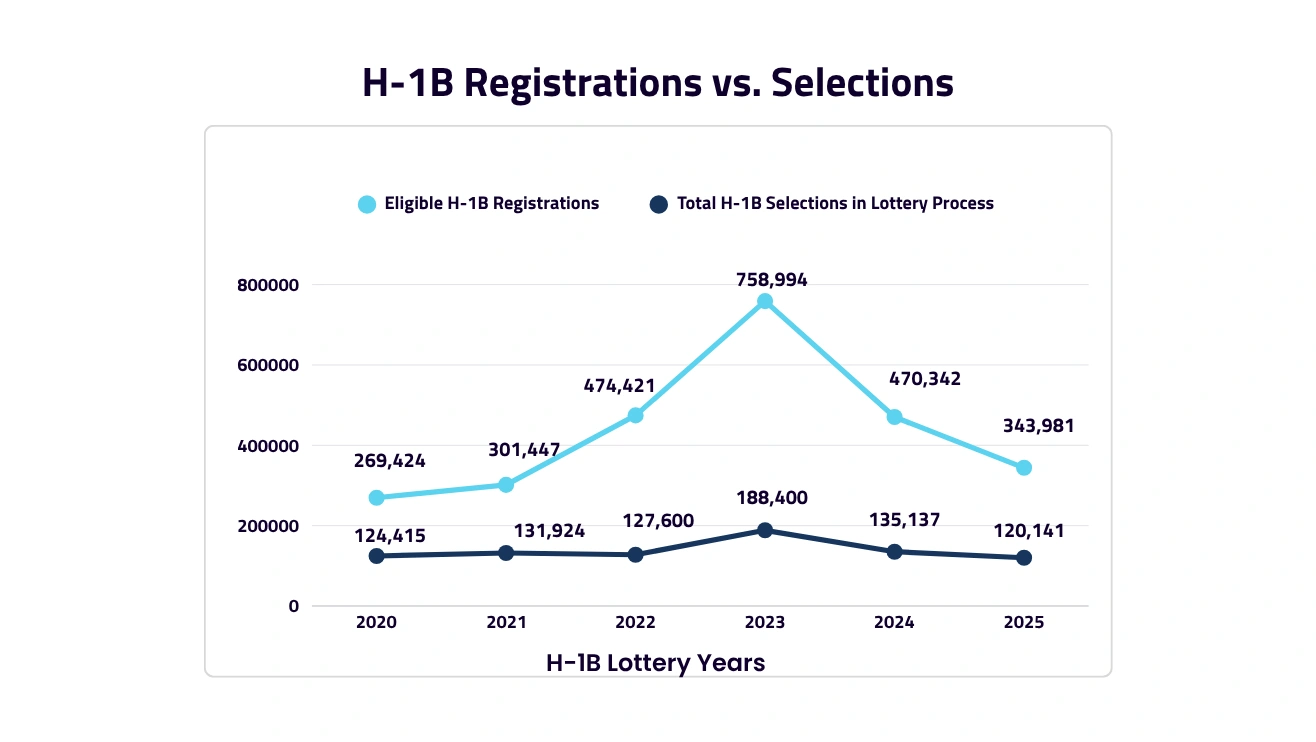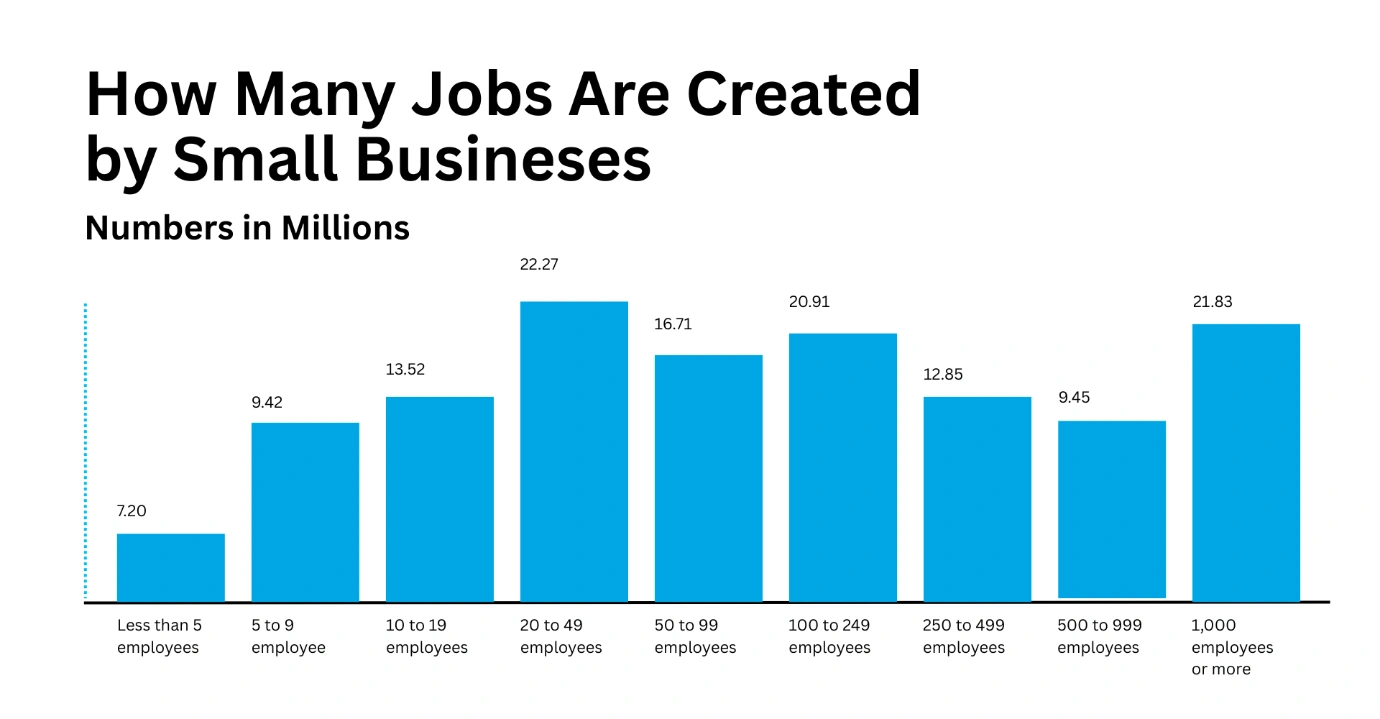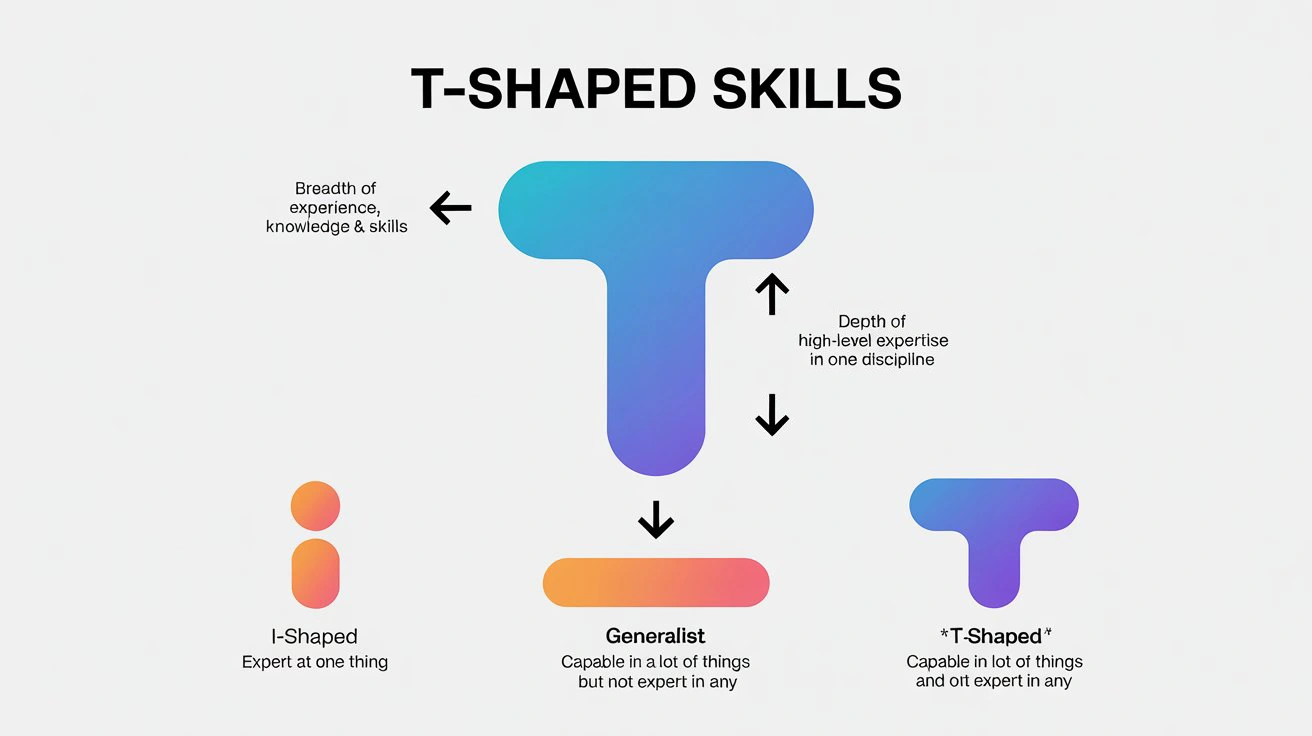The dream of working in the Silicon Valley, the global tech hub, is one of the biggest motivators for tech aspirants who come to study in the US. But in the past few years, the OPT job market and overall US market have seen a lot of changes. This uncertain tech landscape has made this dream feel like a mirage for many OPT students. Lets discuss strategies for OPT Students to get Hired in Tech
OPT students are facing a lot of rejections due to a combination of reasons like strict immigration laws, unemployment, tech layoffs, and more. It’s a tough and stressful situation that many OPT students are going through today. In the past, getting a tech job might have been easier, but today’s job market is much more competitive.
But despite the hurdles, you can still get your dream job if you are focused and plan your job search wisely. A strategic approach towards your career will help you navigate the tough job market. Read this blog, as we have discussed in detail the strategies that can help you establish your career in the USA.
OPT Job Market in 2025
The Optional Practical Training (OPT) program allows F-1 visa students to work in the United States after completing their degree. Initially, students are granted 12 months of work authorization. However, if you graduate from a STEM (Science, Technology, Engineering, or Math) program, you can apply for a 24-month extension, giving you a total of 36 months to work.
According to a 2025 report, approximately 276,452 students were on OPT, 122,101 on STEM OPT, and 140,829 on CPT, reflecting a large pool of international graduates competing for jobs. The tech industry remains a key job provider for STEM students, but it has experienced a noticeable drop in job opportunities. According to recent data from Indeed.com, software development job postings have fallen to 67% of their February 2020 levels.
What Are The Hurdles For OPT Students To Get A Job?
H1B Sponsorship Challenges
One of the biggest hurdles for international students is getting an H-1B visa sponsorship. Many OPT students get automatic rejection as companies are unsure about the complex immigration rules and the lottery system. Due to the complex paperwork, companies hesitate to sponsor candidates. They don’t want to bear the cost related to immigration and administrative work.
Even those OPT students who perform well in technical and behavioral interviews get rejected once the topic of STEM extension or H1B sponsorship arises.
Layoffs and long hiring processes
The bad market and current layoffs have amplified the problems for the OPT students. Due to the current layoffs, companies have a larger pool of domestic talent to hire from. Due to this, they prefer candidates who require no sponsorship, and if they hire, the process gets extended. Also, due to layoffs, many experienced professionals are looking for a job, increasing the competition. OPT students with less practical experience lose out to the experienced local talent. Due to this, some companies have also reduced or paused H-1B sponsorship programs, reducing the number of opportunities for international graduates.
Low selection rate
Getting an H-1B visa is not guaranteed, even if you have a job offer. It’s based on a lottery system, and even the chances of selection have dropped in recent years. For example, in 2024, USCIS received over 780,000 H-1B applications but only picked around 110,000, which means the selection rate was just 14.2%. This is one of the lowest rates of selection in recent years.
Strategies for OPT students to get hired in tech
Start upskilling while in college
If you’re an international student aiming for a tech job on OPT, don’t wait until graduation to build job-ready skills. Upskilling and adding new tech skills while you are still enrolled in college is a great move.
Once your OPT period starts, you have a limited time to get an H1B visa. You typically have 12 months to find a job and get an employer willing to sponsor your H-1B visa. For STEM students, you may get a 24-month extension, but even then, time is limited. You can’t afford to waste weeks just figuring out what to learn.
So, it’s important to be job-ready before your OPT begins. If you waste months learning skills or struggling to get interviews, you may miss the annual H-1B lottery cycle, which is usually held in March each year. Missing this opportunity could mean waiting an entire year, and worse, you may run out of OPT time and might have to leave the U.S.
You can start by looking at entry-level and mid-level tech job postings for roles you aspire to. Learn about the specific technologies, tools, and platforms to focus on.
Here are some ways to upskill:
- Job placement programs: You can also enroll in programs like SynergisticIT that offer upskilling in in-demand skills. Besides upskilling in technologies employers are hiring for, they have a dedicated career team to help you get employment. From resume optimization and LinkedIn branding to recruiter outreach and interview prep, they will support you until you sign an offer.
- Online Courses: Platforms like Coursera, Udemy, and edX offer practical learning courses. Start these courses before your final semester.
- University Resources: Use the career services for resume reviews, mock interviews, and networking events even before you graduate.
By building your skill sets before your OPT begins, you won’t have to waste any time and can immediately apply for jobs. Upskilling in the latest tech will maximize your chances, and you will also feel less pressured.
Get in-demand certifications
Certifications can help OPT students to stand out in a competitive job market. By taking the time and effort to get certification, you will impress employers. It will show that you’re serious, skilled, and up to date with the latest technologies. 97% of IT leaders say certified employees deliver around 50% more value by filling skill gaps, resolving issues faster, and improving team productivity.
Why Certifications Matter:
- Validation: They prove you have mastered a specific skill or tool.
- Efficiency: Companies prefer certified professionals as it reduces their need for extensive on-the-job training.
- Credibility: Certifications from reputable providers (like Amazon, Microsoft, Google) carry significant weight in the tech industry.
Examples of In-Demand Certifications
- AWS Certified Solutions Architect
- Google Professional Data Engineer
- Certified Information Systems Security Professional (CISSP)
- CompTIA Security+
- Amazon Web Services (AWS) Cloud Practitioner
Pick a certification that suits your career goals. Make sure it helps build your skills and makes you more efficient and competent. You can also do the certifications that companies are searching for in candidates. This will enhance your chances.
Avoid over-reliance on consulting companies.
Usually, most international students rely on IT consulting firms for their first jobs, often referred to as “body shops.” While some reputable consulting firms exist, many operate on a model that might not be ideal for long-term career growth, and getting visa sponsorship.
Place you on short-term, less impactful projects.
Consulting firms place you on projects, which are of short duration. These projects don’t offer meaningful experience, making it harder to add to your resume.
Have less direct control over your H1B sponsorship.
According to the U.S. Department of Labor’s H-1B Disclosure Data, IT staffing and consulting firms file a large number of H-1B applications. The majority of these applications are for contract-based roles with a direct hire firm. This arrangement offers limited job security as your visa sponsorship is tied to the client contract. The contract ends, so does the visa sponsorship. This can lead to uncertainty about the future.
Offer lower initial salaries or less robust benefits
Consulting firms sometimes offer below-market salaries, minimal benefits, or unpaid bench time. A Bloomberg investigation revealed that H‑1B workers earned salaries significantly lower than directly hired employees for similar roles.
Be perceived as less desirable by full-time hiring managers
OPT students who start their careers through IT consulting firms may find that some full-time hiring managers see their consulting experience as less valuable compared to direct clients.
Focus on full-time offers with mid-sized and “kid-sized” companies
Applying to small and mid-sized companies, also known as “kid-sized companies,” is a good strategy. Many students face disappointment as they only focus on big tech names like Facebook, Amazon, Apple, Netflix, and Google.
The kid-sized companies include funded startups and growing tech businesses. They may not be very famous, but they can offer the kickstart you may need to start a career in tech. They help you get real, hands-on experience, and are perfect for gaining experience.
Why are small companies a better alternative?
- Less Bureaucracy: Small companies have less stringent HR policies, especially for international hires, compared to large FAANG enterprises.
- Willingness to Sponsor: Many mid-sized companies actively seek candidates and are more willing to sponsor H1B visas for talented candidates.
- Broader Roles: You might get more diverse opportunities to learn in a smaller company. As the company’s employee size is small, you are given more than one role to perform. This accelerates your skill development.
- Lower Competition: FAANG companies get a large number of applicants. Getting a job in one is almost luck-based, plus you must be exceptionally talented. This makes it incredibly difficult for OPT students who need sponsorship to stand out. Also, if they sponsor, they raise a very high bar. At smaller companies, the competition is comparatively low. The low competition increases the chance of hiring.
Tips to help you
- Target Mid-Sized Companies: Research companies with 50-1000 employees. Look for those with recent funding rounds or clear growth trajectories.
- Use LinkedIn and AngelList: Filter searches by company size.
- Network: Attend virtual and in-person career fairs specific to these company types.
Focus more on show, less on tell.
You can list as many projects in your resume. But this will only help you get past the ATS. After your resume reaches the employer, they focus on projects that demonstrate those skills. For every skill you mention in your resume, you must have projects that give evidence of your practical knowledge.
Why are projects important?
- They show that you don’t have just the theoretical knowledge but a practical understanding of how to build projects.
- Your projects reveal your approach towards the problem and how you solve it.
- If you invest time in projects, it means that you are passionate about tech and are ready to improve yourself.
- Projects are a great point of conversation during the interviews. Interviewers ask questions about them, and you can also prepare to answer questions about your project.
Types of Projects to Focus On:
- End-to-End Applications: To show your understanding of the software development cycle, create a full-stack application (web or mobile) using technologies like MERN.
- Data Science/ML Projects: Use real-world datasets to solve a specific problem to showcase your data cleaning, analysis, modeling, and visualization skills. Also, focus on projects that show your knowledge of Python, pandas, scikit-learn, TensorFlow, matplotlib, etc.
- Cloud-Based Projects: Deploy applications on AWS, Azure, or GCP, and demonstrate your cloud proficiency, knowledge of tools like Docker, Kubernetes, Terraform, etc.
- Open-Source Contributions: Contributing to open-source projects shows collaboration skills and real-world coding.
How to Showcase Them?
- GitHub: Make sure you have a well-documented, public GitHub repository for projects. Refer to this source to create a GitHub repository.
- Personal Portfolio Website: Create a website to store all your projects with live demos, detailed descriptions, and screenshots.
- Resume/LinkedIn: Include a section for projects in your resume or social media profile with brief descriptions and links to your projects.
Practice for tech interviews
Many OPT students fail during the interviews because they are underprepared. Lack of preparation makes it difficult to articulate their skills and experiences effectively.
Here are some common reasons for failing interviews:
- Lack of practical experience: OPT only provides work authorization, but it does not offer extensive practical experience in their field. Due to this, OPT students fail to answer technical questions or provide real-world examples. So, the OPT students need to gain practical experience in their field through internships, freelancing, etc.
- Communication challenge: As OPT students come from different cultural backgrounds, they face the challenge of communicating effectively. The chances of getting misinterpreted are high. Practicing communication helps make it easy to answer with confidence.
Start Practicing interviews:
- Coding Interviews: It is an essential stage for all software engineering roles. Practice daily on platforms like LeetCode, HackerRank, and AlgoExpert. Focus on understanding common data structures and algorithms, and not just rote learning solutions. Begin working with easy problems, then medium problems, and understand the logic behind them to gain clarity.
- Behavioral Interviews: Besides technical skills, companies also analyze the cultural fit and collaboration skills. So, make sure you prepare answers showcasing your problem-solving skills, teamwork, and adaptability. Prepare stories using the STAR method for common questions like “Tell me about a time you failed,” “Describe a complex situation,” and How did you handle it? Make sure you create your answer based on the company’s background.
- System Design Interviews: These interviews are for more senior or specialized roles. Practice designing scalable systems (e.g., how would you design Twitter’s feed?). Focus on tradeoffs, scalability, and common design patterns.
Learn Communication
Communication is extremely important in tech as you need to explain your code to the senior as well as collaborate with the team members. Coding is not an isolated work; it is teamwork. So make sure you work on areas like;
- Verbal Clarity: Explain complex concepts to the interviewer in simple language.
- Active Listening: Listen to the interviewer’s questions attentively before answering. This will show your listening skills while working in a team.
- Written Communication: Work on written communication to show you can write project documentation in the future.
- Storytelling: Present your answers using the STAR method, covering points like situation, task, action, and result during behavioral interviews.
How to Practice?
- Mock Interviews: Practice explaining projects and answering behavioral questions with peers, mentors, or career services.
- Speaking challenges: Use debate and speaking apps, online courses, and platforms like meetup.com to improve public speaking and impromptu communication.
- Group Projects: Actively participate in discussions on Discord servers, Reddit, Github, and in team-based hackathons, fellowships, and coding events.
- Network: Chat with professionals from tech. This will help improve your professional discourse.
Acquire T-shaped skills.
In today’s competitive market, on average, everybody has a degree and skills. So, how can you stand out? Having T-shaped skills will help you increase your chances. In this concept, a person possesses deep knowledge in one area (the vertical bar of the “T”) and broad knowledge across related areas (the horizontal bar of the “T”). Due to a combination of skills, you can collaborate and work as both specialists and generalists. This way you will beat an average jobseeker and have chances to make a career in multiple fields in the area of your expertise.
Examples of T-shaped skills:
| Role | Deep Knowledge Area (Specialization) | Broad Knowledge Areas |
| Software Engineer | Backend development (Java, Spring Boot) | Frontend (React), DevOps (Docker, CI/CD), UI/UX, Agile methodology |
| Data Scientist | Machine learning (TensorFlow, scikit-learn) | Cloud platforms (AWS), SQL, data visualization (Tableau), business concepts |
| Product Manager | Product strategy and roadmapping | User research, software development lifecycle, marketing, analytics, stakeholder management |
| UX Designer | User research and interaction design | HTML/CSS, branding, psychology, accessibility, agile development |
| Cybersecurity Analyst | Threat detection and incident response | Networking, OS fundamentals, compliance standards, Python scripting |
| AI Researcher | Natural Language Processing (NLP) | Computer vision, statistics, software engineering, AI ethics |
Apply smartly for jobs.
Only about 2% of online applicants get interview calls. The odds are tougher for international students. So, solely relying on online job applications will not help. You have to look at other ways to find a job. Also, not all jobs posted online clearly tell whether or not they hire international students. So, you must use other methods.
Spend your time connecting with target professionals
Use your connections as they can actually help. Make sure you really put yourself out there, joining professional communities, using LinkedIn outreach, and attending career fairs. By connecting with working professionals, you may find opportunities that are most likely not posted online. Remember, you have to put yourself out there and be seen.
Don’t just blindly apply.
Employers will hire you only if you have the right skills as per their job requirements. So, you must look for and apply for jobs that match your skills, certifications, etc. It’s best you narrow down your job search based on your skills to apply to relevant jobs and not just random jobs to get rejected. Also, choose the industry and field you are applying to.
Conclusion
Securing a tech job as an OPT student in today’s market is challenging. Strict visa timelines, stringent immigration rules, a lottery system, and the US job market all make it difficult for candidates to get hired. In these tough times, SynergisticIT can be a helping hand for the students.
At SynergisticIT, we help students get job-ready through focused upskilling in the most in-demand tech tools and platforms. We don’t just upskill but connect candidates directly with our network of hiring managers, including startups, mid-sized, and Fortune 500 companies. Unlike many consulting firms, we work to place OPT students directly with clients, not just on contract-based roles.
We support candidates every step of the way from writing a resume, preparing for interviews and coding tests, to helping with visa paperwork and documentation. Our job support also extends after you get a job. With SynergisticIT, you don’t have to struggle alone. We make sure you’re not just searching for jobs, but getting hired.
Since 2010, SynergisticIT has helped 1000’s of job seekers thrive in the tech industry. At SynergisticIT, we make candidates work on technologies and skills our clients demand.
Our unique approach goes beyond training, offering hands-on project experience. We also have a marketing team to promote your skills, so you don’t have to. Check out our candidate outcomes page to see the success stories.
Furthermore, we have a vast network of clients with whom we can introduce your resume. Since we have been in business since 2010, our brand name association increases your chances of being considered by potential employers. Please visit our Transform Your Future with SynergisticIT | Candidate Outcomes page to learn how we have helped Tech job seekers and how we can jumpstart your tech career!









